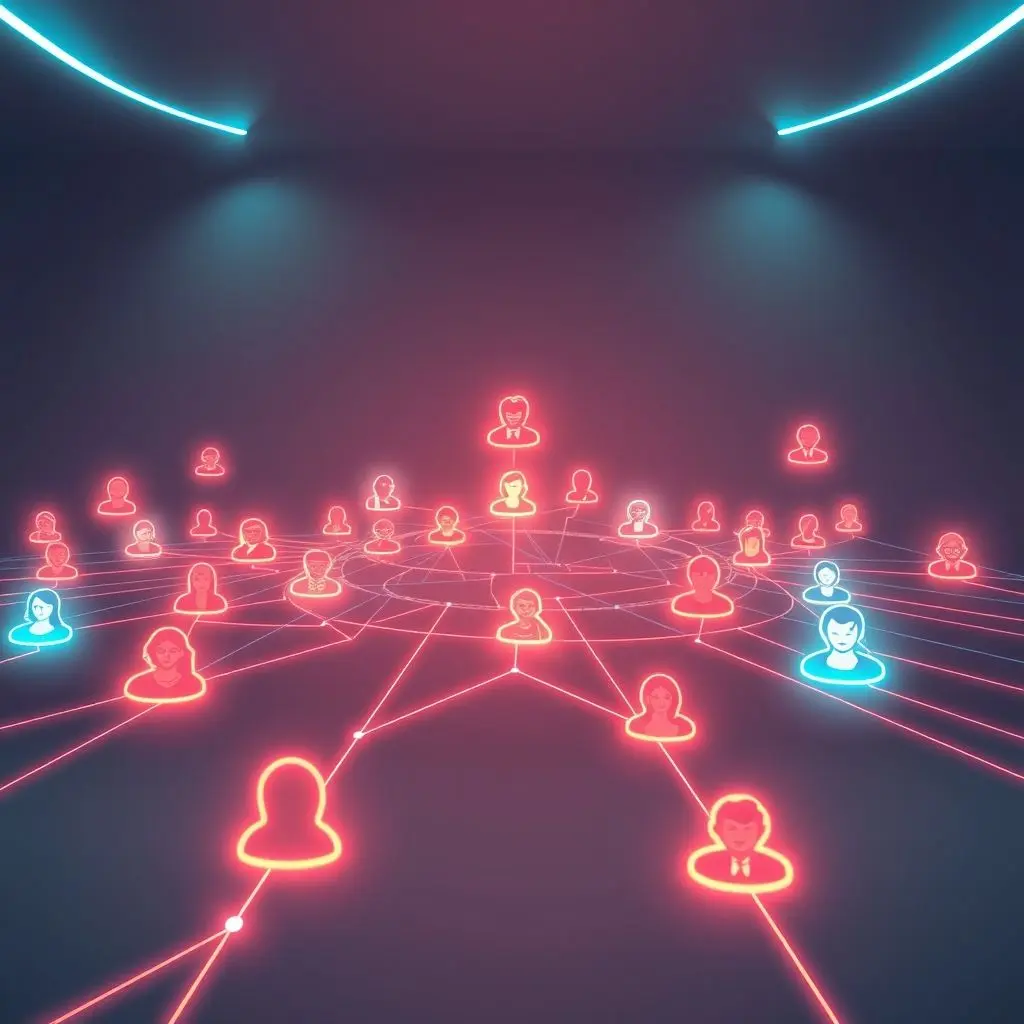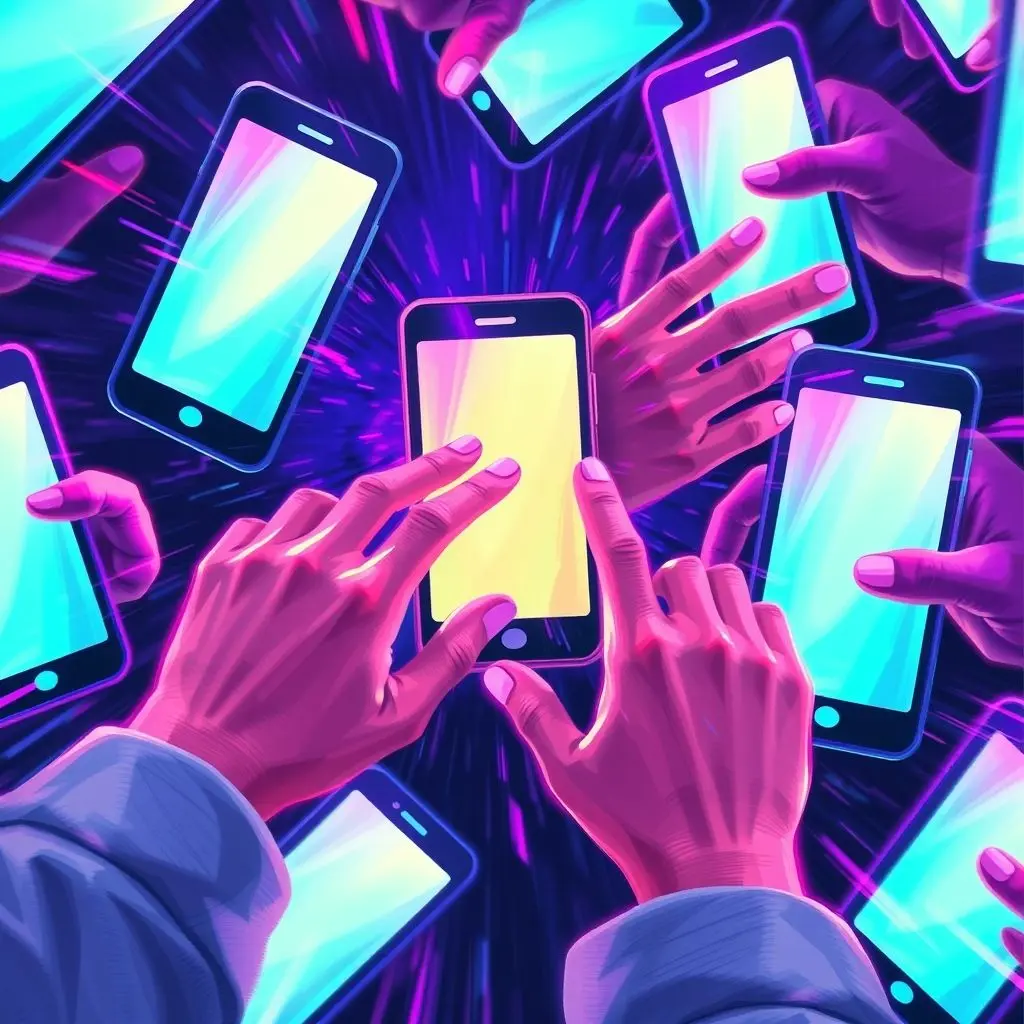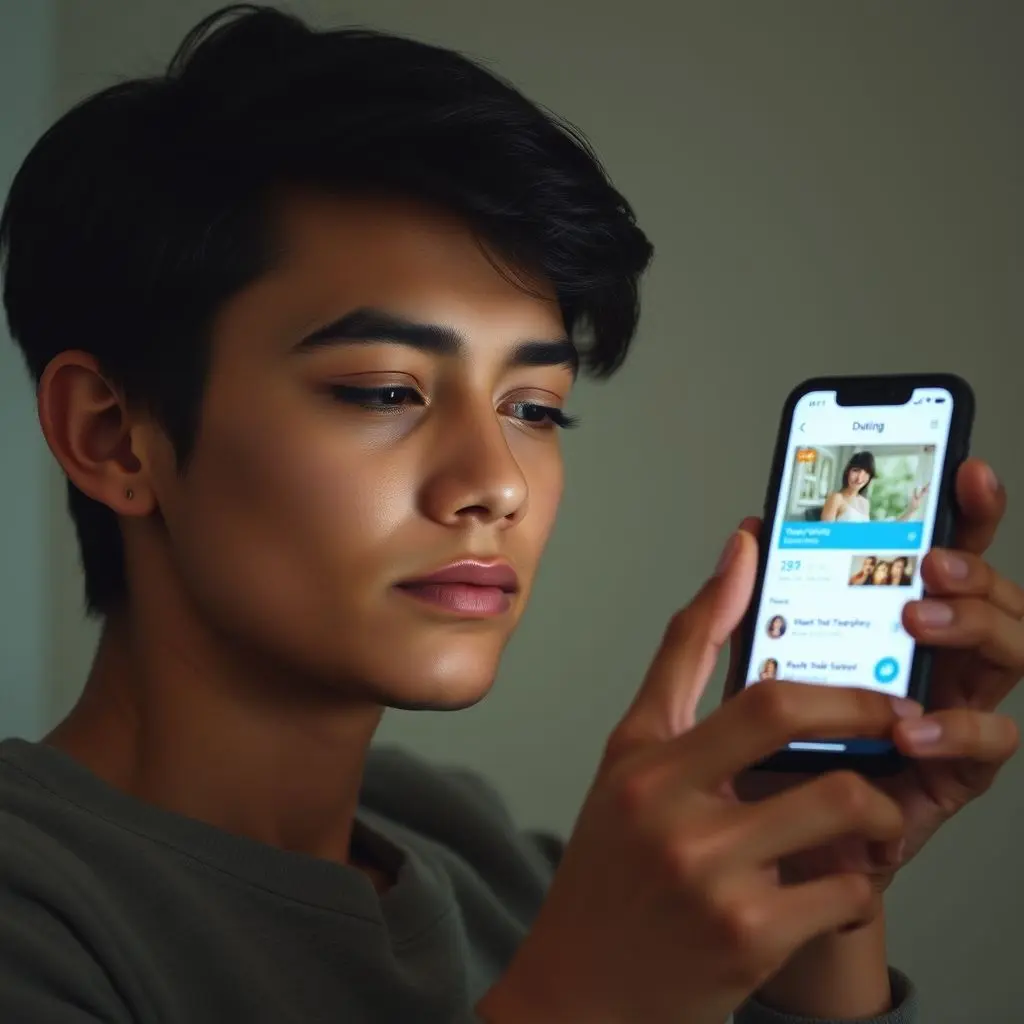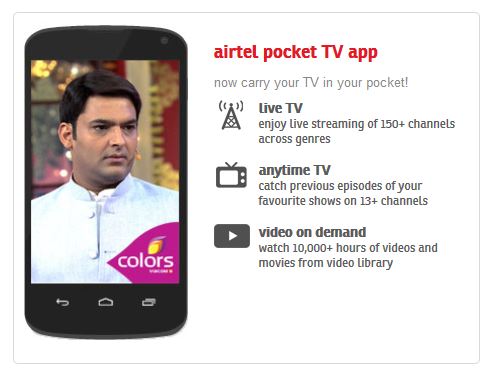Let’s be real, finding love these days often feels like it needs less candlelight and more… a stable Wi-Fi connection and a pair of seriously strong thumbs. We’re catapulted into a world of endless scrolling, a digital catalogue of faces where mysterious algorithms promise to be our high-tech cupids. One moment, you’re mentally picking out china patterns, and the next? Poof. Vanished. Digital tumbleweeds roll across your chat screen. You’ve been ghosted. (Cue the exasperated sigh we all know too well.)
So, what’s the deal? Is technology the ultimate wingman, or is it just stirring up a whirlwind of connection chaos? If you’ve ever felt like you’re stuck in a never-ending swipe spiral, wondering how to find genuine love without losing your marbles, you’re in the right place. We’re diving deep into tech’s role in modern dating – the good, the bad, and the downright confusing.
Table of Contents
The Rise of the Algorithm: How Tech Became Cupid (or Tried To)
It wasn’t always like this. Remember personal ads in newspapers? Or perhaps the early, slightly clunky dating websites of the late 90s and early 2000s? Those were the pioneers. But technology, as it always does, evolved. Enter the smartphone era, and with it, a deluge of dating apps promising love at your fingertips.
The core selling point? Sophisticated algorithms. These complex mathematical formulas analyze your profile, your preferences, your behavior (who you swipe on, who you message), and even data from users deemed similar to you. The goal is to present you with a curated list of potential matches, theoretically increasing your chances of finding someone compatible. They crunch data points like age, location, interests, education, and sometimes even more nuanced psychological factors derived from questionnaires.

The promise is alluring: a wider net than you could ever cast traditionally, and a supposedly smarter way to filter through it. But how much of it is science, and how much is just a really good suggestion engine? The truth likely lies somewhere in between.
The “Swipe Life”: Pros and Cons of a Digital Dating Pool
Ah, the swipe. That simple gesture now synonymous with modern romance. It has undeniably reshaped how we meet people, bringing both exhilarating possibilities and frustrating pitfalls.
The Upsides: More Fish in the Sea?
- Unparalleled Accessibility & Convenience: Looking for love (or a date for Friday) from your couch, during your commute, or even while waiting for your coffee? Apps make it possible.
- Expanded Horizons: You’re no longer limited to your immediate social circle or local haunts. Dating apps connect you with a diverse array of individuals you might never have crossed paths with otherwise.
- A Boon for the Bashful: For those who are shy or introverted, making the first move online can feel less daunting than approaching someone in person.
- Niche Markets: From apps for specific religions, hobbies, or lifestyles, technology allows for highly targeted dating experiences, helping people find communities of like-minded individuals.
The Downsides: Drowning in Options?
- The Paradox of Choice: Too many options can lead to decision fatigue and an inability to commit. It’s the “what if there’s someone better just a swipe away?” syndrome.
- Superficiality Reigns: With limited information and a focus on photos, initial judgments are often lightning-fast and skin-deep. Nuance and personality can get lost in the shuffle.
- Gamification of Dating: Swiping can feel like a game, and profiles can become collectible items rather than representations of real human beings. This can lead to a dehumanizing experience.
- Diminished Effort & Attention Spans: The ease of moving on to the next profile can sometimes mean less effort is put into getting to know someone or crafting thoughtful messages.

“Ghosted! Digital Tumbleweeds”: The Darker Side of Tech-Love
Perhaps one of the most talked-about phenomena of modern dating is ghosting: abruptly ending all communication with someone without explanation. While not exclusive to online dating, the relative anonymity and low-stakes environment of apps have certainly amplified it.
But ghosting isn’t the only spectral player in the digital dating game. We also have:
- Breadcrumbing: Leading someone on with sporadic, non-committal messages to keep them interested, without any real intention of pursuing a relationship.
- Benching (or Back-burnering): Keeping potential partners on the “sidelines” as backup options while you explore what you perceive to be better prospects.
- Orbiting: Disappearing from direct communication but still lurking on their social media – watching stories, liking posts – a digital haunting of sorts.
The emotional toll of these behaviors can be significant. Ghosting, in particular, can leave individuals feeling confused, rejected, and questioning their self-worth. The lack of closure makes it difficult to move on. This digital detachment can erode trust and make people more cynical about the dating process.
Sound Familiar? Maybe This Will Too…
Speaking of feeling lost in the swipe spiral and trying to figure out this whole tech-love thing without going completely bonkers… sound familiar? Well, we made a little something that might just resonate (and maybe make you chuckle). Check out our take on the digital dating dilemma:
Hopefully, that brought a smile (or a knowing nod) to your face! Now, let’s get back to decoding this digital dating world.
Beyond the Swipe: Tech’s Evolving Role in Relationship Building
It’s not all doom and gloom, and tech’s role in dating isn’t limited to just finding the initial match. Once a connection is sparked, technology offers numerous ways to nurture and develop it:
- Video Calls & Virtual Dates: Especially crucial in the age of long-distance connections or initial pandemic-era dating, video calls allow for more nuanced communication than text. Seeing someone’s expressions and hearing their tone of voice can build a stronger sense of connection. Virtual dates – watching a movie together via a streaming party, playing online games, or even cooking the same meal “together” over video – have become creative ways to bond.
- Constant Communication (Used Wisely): Messaging apps allow couples to stay in touch throughout the day, sharing small moments and providing support. Of course, the key here is balance and respecting each other’s space.
- Shared Digital Experiences: Creating shared playlists, collaborating on documents for planning trips, or even maintaining a private online photo album can be modern ways of building a shared history.
- The Future is…AI-ssisted? There’s emerging talk about AI’s potential future role, perhaps as relationship coaching bots or tools to help analyze communication patterns. (Disclaimer: This is largely speculative, and the practical applications, ethical considerations, and effectiveness of such AI are still very much under development and debate.)

Finding Your Sanity in the Digital Dating Maze: Tips and Tricks
Navigating the world of tech-mediated dating without losing your sanity (or your faith in humanity) is a skill. Here are some strategies to help you find genuine connection amidst the digital noise:
- Be Intentional and Know Your ‘Why’: What are you truly looking for? A casual connection, a serious relationship, or just exploring? Being clear about your intentions helps you filter options and communicate more effectively.
- Set Healthy Boundaries: Limit your time on dating apps to avoid burnout. Don’t feel pressured to respond immediately to every message. Your mental well-being comes first.
- Prioritize Real-Life Interaction (Safely!): The goal of online dating should eventually be to meet in person (if that’s what you’re seeking). Aim to move from digital chat to a real-world meeting in a safe, public place once you feel comfortable.
- Quality Over Quantity: Instead of swiping endlessly, focus on a few promising connections. Invest your energy in meaningful conversations rather than collecting matches.
- Manage Expectations: Not every match will be “the one,” and not every conversation will lead to a date. Approach dating with curiosity and openness, but also with realistic expectations.
- Practice Self-Care: Rejection, ghosting, or just a string of bad dates can be tough. Prioritize activities that recharge you and boost your self-esteem outside of the dating world.
- Remember the Human: Behind every profile is a real person with feelings, hopes, and insecurities, just like you. Treat others with the respect and kindness you’d appreciate.
- Don’t Be Afraid to Take Breaks: If it all feels overwhelming, step away. Deactivate your profiles for a while and focus on other aspects of your life. The apps will still be there if and when you decide to return.

Conclusion: Tech – A Tool, Not a Destiny
Technology has undeniably thrown a fascinating, and at times frustrating, wrench into the age-old pursuit of love. It’s given us unprecedented access to potential partners and sophisticated tools to connect. Yet, it’s also introduced new anxieties, behaviors, and a potential for superficiality.
Ultimately, dating apps, algorithms, and all the accompanying tech are just that: tools. They are not inherently good or bad. Their impact depends on how we use them, the mindset we bring to the table, and the societal norms that develop around them. The fundamentals of human connection – empathy, genuine interest, clear communication, and respect – remain as crucial as ever, whether you meet someone through a friend, at a coffee shop, or via a swipe right.
So, can you find love in the age of algorithms? Absolutely. But it requires navigating the digital landscape with awareness, intention, and a healthy dose of self-preservation. Tech can open doors, but you are the one who decides which ones to walk through and how you engage with what’s on the other side.
Frequently Asked Questions (FAQs)
Q1: Is online dating actually effective for finding serious relationships?
A: Yes, it can be. Many studies and countless anecdotes show that a significant number of people find long-term partners and even spouses through online dating. Success often depends on the platform chosen, the effort invested, clarity of intentions, and a bit of luck. However, it’s not a guaranteed path for everyone, and experiences vary widely.
Q2: How can I avoid dating app burnout?
A: To avoid burnout: set time limits for app usage, don’t take ghosting or rejection personally (it often says more about the other person), focus on quality interactions over quantity of matches, take regular breaks from the apps, and ensure you’re nurturing your offline life and well-being.
Q3: Are dating app algorithms truly accurate in matching people?
A: While algorithms are designed to suggest potentially compatible profiles based on data, they are not infallible predictors of human chemistry or long-term compatibility. They can increase your chances of meeting someone with shared interests or values, but genuine connection is far more complex than any algorithm can fully capture. Think of them as sophisticated introduction services rather than guaranteed matchmakers.
Q4: What’s the future of tech in dating?
A: The future likely involves even more sophisticated AI, potentially more immersive experiences (like VR dates, though this is still niche), and possibly apps that focus more on deeper compatibility metrics or fostering community. There’s also a growing trend towards apps that counter “swipe fatigue” by offering fewer, more curated matches or encouraging slower, more intentional interaction. Ethical considerations around data privacy and algorithmic bias will also continue to be important.
Q5: How can I stay safe when meeting someone from a dating app for the first time?
A: Safety is paramount. Always meet in a public place for the first few dates. Tell a friend or family member where you’re going, who you’re meeting, and when you expect to be back. Arrange your own transportation. Don’t share overly personal information (like your home address or workplace) too early. Trust your instincts – if something feels off, it’s okay to leave. Consider doing a quick reverse image search or checking their social media (if public) to verify their identity.

